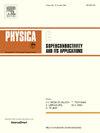Design and implementation of dummy fill for chemical-mechanical polishing in superconducting single flux quantum circuit fabrication process
IF 1
3区 物理与天体物理
Q4 PHYSICS, APPLIED
Physica C-superconductivity and Its Applications
Pub Date : 2025-02-04
DOI:10.1016/j.physc.2025.1354668
引用次数: 0
Abstract
We present the development of a planarized fabrication process for large-scale Single Flux Quantum (RSFQ) circuits, termed “SIMIT Nb03b.” This process utilizes chemical-mechanical polishing (CMP) to planarize the SiO2 interlayer dielectric, enabling reduced feature sizes and improved scalability. Dummy fill has proven to be an effective technique for reducing process variation and to improve planarization for chemical mechanical polishing, however, few studies have been reported on how to determine the appropriate fill pattern for superconducting integrated process. In this work, dummy fill structures were strategically placed outside the circuit region to minimize their impact on the circuit's logical functionality. Then we determine the pattern density of dummy fill based on the standard cell library of the process and a fill pattern density of 45 %, length of 7 μm, and spacing of 3.5 μm between each other is chosen. Experimental results show that, at this dummy fill setup, the non-uniformity of the SiO2 film thickness after CMP is <5 %. We also developed an indirect method for assessing the residual SiO2 thickness in circuit regions after CMP, which overcomes the limitations of direct measurement on small, narrow circuit patterns. This method enhanced the accuracy of measuring the residual SiO2 film thickness in circuit regions by over 50 % compared to direct measurement techniques. The SIMIT Nb03b process has achieved a critical current of 6 kA/cm² and supported junction sizes down to 0.4 μm, small-scale superconducting integrated circuits fabricated by this process demonstrated a sufficiently wide operating margin, validating the efficacy of the developed fabrication technology.
超导单通量量子电路制造过程中化学机械抛光假填料的设计与实现
我们提出了一种用于大规模单通量量子(RSFQ)电路的平面化制造工艺,称为“SIMIT Nb03b”。该工艺利用化学机械抛光(CMP)使SiO2层间介质平坦化,从而减小了特征尺寸并提高了可扩展性。在化学机械抛光中,虚拟填充是一种有效的减少工艺变化和提高表面平整度的技术,然而,如何确定合适的超导集成工艺填充模式的研究很少。在这项工作中,虚拟填充结构被战略性地放置在电路区域之外,以尽量减少它们对电路逻辑功能的影响。然后根据该工艺的标准细胞库确定虚拟填充的图案密度,选择填充图案密度为45%,长度为7 μm,间距为3.5 μm。实验结果表明,在此虚拟填充设置下,CMP后SiO2膜厚度的不均匀性为<; 5%。我们还开发了一种间接方法来评估CMP后电路区域的残余SiO2厚度,该方法克服了直接测量小而窄的电路图案的局限性。与直接测量技术相比,该方法将电路区域残余SiO2膜厚度的测量精度提高了50%以上。SIMIT Nb03b工艺实现了临界电流为6 kA/cm²,支撑结尺寸降至0.4 μm,制备的小型超导集成电路具有足够宽的工作裕度,验证了该工艺的有效性。
本文章由计算机程序翻译,如有差异,请以英文原文为准。
求助全文
约1分钟内获得全文
求助全文
来源期刊
CiteScore
2.70
自引率
11.80%
发文量
102
审稿时长
66 days
期刊介绍:
Physica C (Superconductivity and its Applications) publishes peer-reviewed papers on novel developments in the field of superconductivity. Topics include discovery of new superconducting materials and elucidation of their mechanisms, physics of vortex matter, enhancement of critical properties of superconductors, identification of novel properties and processing methods that improve their performance and promote new routes to applications of superconductivity.
The main goal of the journal is to publish:
1. Papers that substantially increase the understanding of the fundamental aspects and mechanisms of superconductivity and vortex matter through theoretical and experimental methods.
2. Papers that report on novel physical properties and processing of materials that substantially enhance their critical performance.
3. Papers that promote new or improved routes to applications of superconductivity and/or superconducting materials, and proof-of-concept novel proto-type superconducting devices.
The editors of the journal will select papers that are well written and based on thorough research that provide truly novel insights.

 求助内容:
求助内容: 应助结果提醒方式:
应助结果提醒方式:


